Showing Spotlights 593 - 600 of 2879 in category All (newest first):
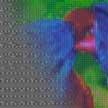 Similar to the way painters mix different hues and tones of colors on their palette, researchers demonstrated a method for continuous mixing of different structural colors at the nanoscale on a single pixel. This novel method for structurally generating and mixing vivid colors additively is based on interleaved rectangular lattices of metallic nanoparticles. This coloring approach offers a large individual control over the chromaticity and luminance of the generated colors.
Similar to the way painters mix different hues and tones of colors on their palette, researchers demonstrated a method for continuous mixing of different structural colors at the nanoscale on a single pixel. This novel method for structurally generating and mixing vivid colors additively is based on interleaved rectangular lattices of metallic nanoparticles. This coloring approach offers a large individual control over the chromaticity and luminance of the generated colors.
Feb 18th, 2020
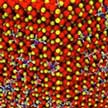 Hematite as a magnetic photocatalyst can support the production of oxygen in its magnetic ground state and thereby improve the efficiency of hydrogen production. When hematite is made thinner, another important improvement in the efficiency of the reaction could be accomplished by expectedly more efficient separation of charge carriers upon the absorption of light on the surface. Scientists now elucidate exactly how optical and magnetic properties of hematite change when decreased in thickness to the atomistic scale.
Hematite as a magnetic photocatalyst can support the production of oxygen in its magnetic ground state and thereby improve the efficiency of hydrogen production. When hematite is made thinner, another important improvement in the efficiency of the reaction could be accomplished by expectedly more efficient separation of charge carriers upon the absorption of light on the surface. Scientists now elucidate exactly how optical and magnetic properties of hematite change when decreased in thickness to the atomistic scale.
Feb 14th, 2020
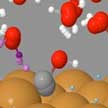 Oxygen reduction reaction (ORR), oxygen evolution reaction (OER), and hydrogen evolution reaction (HER) are among the core electrochemical processes in clean energy conversion and storage devices, such as metal-air batteries, water electrolyzers, and fuel cells. Single-atom catalysts have emerged as a new frontier of heterogeneous catalysts for these reactions due to their highly increased coverage of active sites, enhanced catalytic performance, and maximal metal utilization. By using machine learning algorithms, researchers provide a new paradigm for directly predicting the catalytic performance from physical properties of catalyst candidates.
Oxygen reduction reaction (ORR), oxygen evolution reaction (OER), and hydrogen evolution reaction (HER) are among the core electrochemical processes in clean energy conversion and storage devices, such as metal-air batteries, water electrolyzers, and fuel cells. Single-atom catalysts have emerged as a new frontier of heterogeneous catalysts for these reactions due to their highly increased coverage of active sites, enhanced catalytic performance, and maximal metal utilization. By using machine learning algorithms, researchers provide a new paradigm for directly predicting the catalytic performance from physical properties of catalyst candidates.
Feb 13th, 2020
 Organic-inorganic metal halide perovskites have emerged as a promising optoelectronic material with exceptional structure and property tunability. This new generation of functional materials possess excellent properties such as large optical absorption, long carrier diffusion length, high carrier mobility, and low-cost solution production process. Fabrication methods based on inkjet printing emerged for patterning such perovskite micro- and nanostructures. However, these patterning techniques for perovskites are still limited to in-plane fabrication and alignment. To overcome this limitation, researchers have developed a method to print perovskite nanostructures in three dimensions.
Organic-inorganic metal halide perovskites have emerged as a promising optoelectronic material with exceptional structure and property tunability. This new generation of functional materials possess excellent properties such as large optical absorption, long carrier diffusion length, high carrier mobility, and low-cost solution production process. Fabrication methods based on inkjet printing emerged for patterning such perovskite micro- and nanostructures. However, these patterning techniques for perovskites are still limited to in-plane fabrication and alignment. To overcome this limitation, researchers have developed a method to print perovskite nanostructures in three dimensions.
Feb 11th, 2020
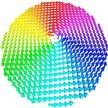 New types of magnetic nanostructures have interesting properties that enhance novel medical applications in diagnosis and allow the exploration of new therapeutic techniques. In a new paper, researchers review promising new nanomaterials that can be used in cancer diagnosis and treatment, namely as magnetic resonance imaging (MRI) contrast agents. One especially interesting advance involves exotic spin configurations, like a vortex state in nanodiscs, where magnetic moments arrange into a curly geometry.
New types of magnetic nanostructures have interesting properties that enhance novel medical applications in diagnosis and allow the exploration of new therapeutic techniques. In a new paper, researchers review promising new nanomaterials that can be used in cancer diagnosis and treatment, namely as magnetic resonance imaging (MRI) contrast agents. One especially interesting advance involves exotic spin configurations, like a vortex state in nanodiscs, where magnetic moments arrange into a curly geometry.
Feb 6th, 2020
 Proteins present in human plasma mirror a person's physiology and the ability to rapidly profile the plasma proteome holds the promise of a revolution in point-of-care disease diagnosis and therapeutic monitoring. New research findings suggest that levitation patterns of human plasma proteins using a magnetic levitation technique may provide useful information about the health spectrum of individual donors. The study reveals that optical images of magnetically levitated plasma proteins carry important information about the health spectrum of plasma donors.
Proteins present in human plasma mirror a person's physiology and the ability to rapidly profile the plasma proteome holds the promise of a revolution in point-of-care disease diagnosis and therapeutic monitoring. New research findings suggest that levitation patterns of human plasma proteins using a magnetic levitation technique may provide useful information about the health spectrum of individual donors. The study reveals that optical images of magnetically levitated plasma proteins carry important information about the health spectrum of plasma donors.
Feb 3rd, 2020
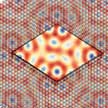 Researchers explain how a higher order periodic modulations due to the encapsulation of graphene between hexagonal boron nitride, called supermoire, affects the electronic and structural properties of graphene, as revealed in three recent independent experiments. High quality graphene samples are of high importance for obtaining and exploiting its theoretically described properties. Utilizing an adequate substrate reduces the corrugation and improves otherwise disorder limited properties of graphene.
Researchers explain how a higher order periodic modulations due to the encapsulation of graphene between hexagonal boron nitride, called supermoire, affects the electronic and structural properties of graphene, as revealed in three recent independent experiments. High quality graphene samples are of high importance for obtaining and exploiting its theoretically described properties. Utilizing an adequate substrate reduces the corrugation and improves otherwise disorder limited properties of graphene.
Jan 29th, 2020
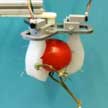 Grippers or end effectors are an essential tool integrated with robotic arms for implementing grasping and manipulating functions in a variety of tasks, ranging from picking up and holding objects, to digging and sorting, to locomotion and scratching. Engineers have developed a new kind of smart soft actuator, based on the triboelectric nanogenerator (TENG), to fabricate intelligent grippers for robotics, aiming at potential applications in the areas of agriculture, engineering and healthcare and beyond.
Grippers or end effectors are an essential tool integrated with robotic arms for implementing grasping and manipulating functions in a variety of tasks, ranging from picking up and holding objects, to digging and sorting, to locomotion and scratching. Engineers have developed a new kind of smart soft actuator, based on the triboelectric nanogenerator (TENG), to fabricate intelligent grippers for robotics, aiming at potential applications in the areas of agriculture, engineering and healthcare and beyond.
Jan 21st, 2020
 Similar to the way painters mix different hues and tones of colors on their palette, researchers demonstrated a method for continuous mixing of different structural colors at the nanoscale on a single pixel. This novel method for structurally generating and mixing vivid colors additively is based on interleaved rectangular lattices of metallic nanoparticles. This coloring approach offers a large individual control over the chromaticity and luminance of the generated colors.
Similar to the way painters mix different hues and tones of colors on their palette, researchers demonstrated a method for continuous mixing of different structural colors at the nanoscale on a single pixel. This novel method for structurally generating and mixing vivid colors additively is based on interleaved rectangular lattices of metallic nanoparticles. This coloring approach offers a large individual control over the chromaticity and luminance of the generated colors.
 Subscribe to our Nanotechnology Spotlight feed
Subscribe to our Nanotechnology Spotlight feed





